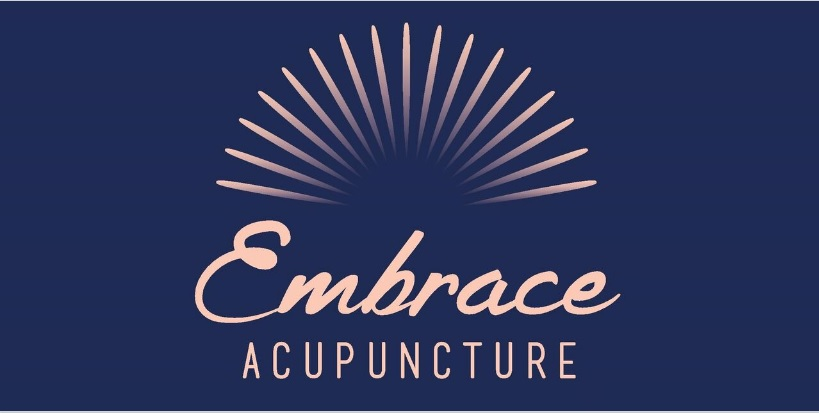Acupuncture Research and Safety in Pregnancy
At Embrace Acupuncture, we’re passionate about supporting women through every stage of pregnancy with care grounded in both tradition and research. Acupuncture has been used safely for thousands of years to help women prepare for labour, ease common pregnancy discomforts, and support natural birth outcomes.
Modern research continues to explore how acupuncture and Chinese Medicine can assist during pregnancy, from pre-birth treatments to helping turn breech babies. While studies vary in quality and scope, many have shown positive results, and acupuncture is already used in hospitals and by midwives around the world.
Our approach always prioritises safety, collaboration, and individualised care — ensuring treatments are tailored to your unique needs and carried out alongside your healthcare team.
A note on Chinese Medicine research -
Chinese Medicine (usually Acupuncture and herbs) has been used for thousands of years to assist women with their health, from puberty to pregnancy to menopause and beyond. It is an amazing system of medicine that has spread across the globe and helped millions of people. While Chinese Medicine isn't the answer for all people for all conditions, a growing body of research is confirming the efficacy of Chinese Medicine! It isn't always smooth sailing though.
Obtaining large volumes of Acupuncture and Herbal Medicine high-quality data can be tricky for three reasons:
Chinese Medicine individualises its treatments according to the patients presenting symptoms. The beauty of it is that you’re receiving personalised care. This doesnt fit very well into a scientific trial where everything needs to be standardised in order to ‘prove’ that something works.
Its hard to rule out the placebo effect. Excellent studies have a group comparing the treatment to a ‘fake treatment’ to see which is better. Its hard to do ‘fake Acupuncture’. Given theres more than 300 Acupuncture points on the body, even when researchers choose an Acupuncture point away from the other Acupuncture points, it may be very close to another point thats having a positive effect on the body, which confuses results.
While its very important to prove that Acupuncture works better than doing nothing, better than the standard of care treatments AND better than placebo, its important to know that placebo effects play a role in any kind of medicine/trial and is often hard to rule out. Eg feeling better after seeing a doctor or taking a tablet.While there is some excellent research coming out across the globe from universities and other institutions, big research projects cost lots of money and that kind of funding isnt always easily accessible for Chinese Medicine research.
Some useful jargon to know:
The most conclusive form of research available is a Systematic Review. This reviews many Randomized Control Trials (RCT’s – subjects don't know which treatment they are getting) and takes into consideration how good the methodology of the studies are. A systematic review may say there isn't much proof if some studies aren't well conducted, don't contain a big enough sample size or if some study results contradict other study results - so finding systematic reviews 'proving' a finding can be challenging in all fields of science and there may well be positive evidence but just not enough.
Pre birth Acupuncture & Labour Induction
Acupuncture is increasingly being recommended as a pre birthing treatment and is currently used routinely in hospitals in Germany and by trained Midwives in New Zealand. It involves the use of specific Acupuncture points mostly located on the legs that help prepare the cervix and pelvis for labour and other customised points are chosen that may help alleviate other symptoms (eg pain) you have at the time. Acupressure points are also taught during these sessions.
The recommended time to commence Pre-birth Acupuncture is 36/37 weeks, with once a week treatments until 40 weeks. This is based on classical treatments and positive research papers, of which you can see more of here. Acupuncture is done in conjunction with regular testing and monitoring from Midwives and Obstetricians to ensure safety for mother and baby. Acupuncture can be done before this time to help alleviate other health symptoms but would not be specifically Pre-Birth Acupuncture.
Though more rigorous scientific trials are needed in this area, and while this study does not meet the gold standard of systematic reviews of randomised control trials, this observational study had positive findings. The study was conducted by midwives over 4 months in New Zealand in 2004 with 169 pregnant women taking part. It found results supported the findings of earlier studies by Zeisler et al in 1998 and concluded the number of women who had Pre-Birth Acupuncture going into labour without intervention was higher, labour time was shorter and the epidural rate was lower.
Every pregnancy is different and there is no one size fits all approach. If you have any questions or would like to find out more about how we would address your unique situation, please contact us directly.
Acupuncture for Turning Breech Babies
The use of moxibustion (moxa) applied to the little toe has been used in Chinese hospitals to treat breech presentations for decades, however the research to date, although promising, is not yet sufficient for this method to be incorporated into clinical practice guidelines for obstetricians in Australia, although the New Zealand clinical practice guidelines do recommend it.
The latest Cochrane systematic review on this was 2012 and found “limited evidence”.
Though other studies, haven't found a conclusive positive benefit, the Vas et al 2012 study published in the British Medical Journal found; “Moxibustion at acupuncture point BL67 is effective and safe to correct non-vertex presentation when used between 33 and 35 weeks of gestation. We believe that moxibustion represents a treatment option that should be considered."
